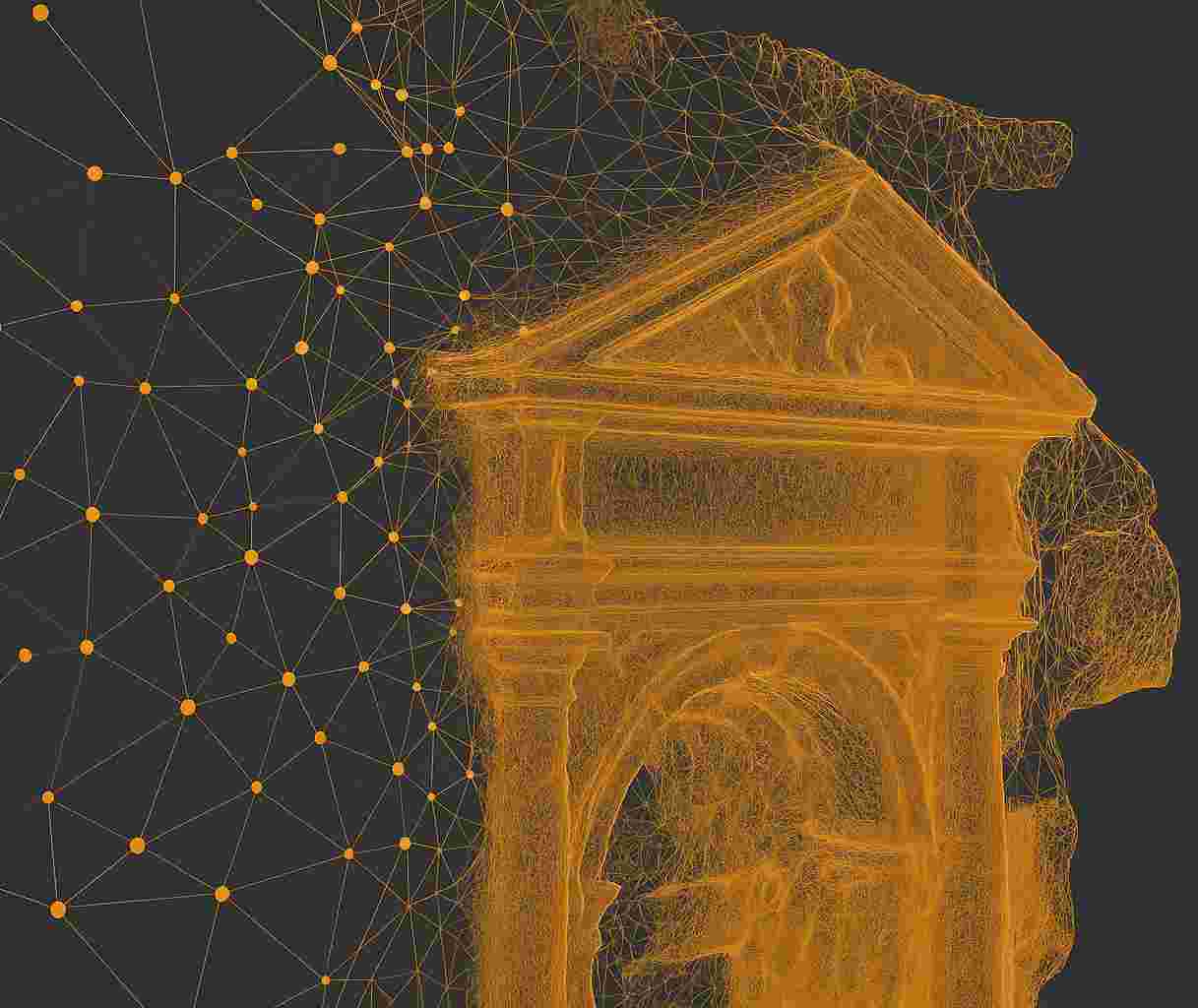
From Bricks to Graphs
Existing buildings including monuments and built cultural heritage are an increasingly important area of architectural and urban planning. The brown-field building stock plays a decisive role in reaching climate targets and transforming the cities in accordance with SDG 13. Yet, processes, tools and scientific methods in design, planning and construction are mostly geared towards new buildings. The acquisition, processing, preparation and provision for crucial information for planning within the existing building stock is underrepresented in today’s digital landscapes.
Cultural heritage preservation still faces major challenges. Archives are often scattered across different institutions, documented in inconsistent ways, and stored in fragile paper formats. Valuable information frequently remain locked away in isolated, inaccessible databases, with little connection to other sources. This fragmentation makes it hard for researchers, practitioners, and the public to build a comprehensive picture of our shared heritage. Over time, changing circumstances and historical events also lead to the loss of valuable information, leaving gaps that may never be recovered.
Today, architectural research and practice are increasingly shaped by the digital turn. Cultural heritage preservation – among other fields – is moving toward digital ecosystems to ensure the visibility and accessibility of unique data collections. This course introduces students to the principles of linked data: a powerful way to document heritage and share it in lasting, connected, and machine-readable formats.
We’ll dive into methods and standards that help information communicate across platforms, disciplines, and borders. You’ll learn how diverse, messy data can be modelled into structured knowledge – so documented sites and events aren’t just isolated records, but part of a bigger picture. To ground these ideas in practice, we will work with real cases, for example, local Aachen´s landmarks or war-affected cultural sites in Ukraine that require urgent digitization, as both the buildings and their archives are at risk of destruction.
In this course, we emphasize good scientific practice. This includes careful research data management to ensure transparency, reproducibility, and the long-term usability of our work. In this way, data are not only collected but also sustainably documented and shared.
If you’re passionate about culture, motivated to enhance global heritage awareness and curious about technology, this course is for you!
Objectives
- Document and describe existing (brown-field) buildings including their damages
- Preserve architectural information using digital tools
- Understand the fundamentals of linked data and explore established vocabularies in the cultural heritage sector
- Pursue personal academic interests and acquire good research practice
- Contribute to ongoing research at the chair and apply methods to real building cases under threat
Lecturers
Dates
| Day | Location | Time |
|---|---|---|
| Wednesdays | Seminar Room | (1080|103) | 13:00 – 14:30 |
